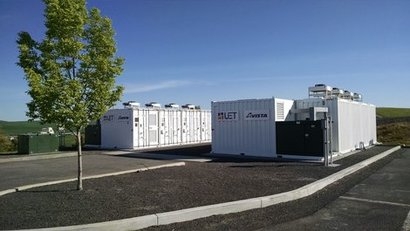
All previous forecasts seem to be only 10 years out and rely purely on existing pipeline, but the energy storage market is being driven by the ramping up of discreet contractual supply line deals of raw materials and the build out of 2 TWh worth of annual giga factories spread across the entire globe (as highlighted in Rethink's companion Gigafactory report).
The global installations of short term (4 hour) energy storage on the grid and in homes, in the form of Battery Energy Storage Systems (BESS), will rise from 67 GWh of storage in 2021 and capacity of 22 GW, to 12,147 GWh of storage offering 3,715 GW of capacity by 2050.
The 2031 numbers compare better to Rethink Energy’s forecasting rivals, who refuse to forecast out for 30 years, and show that 2,327 GWh of storage will cumulatively installed by 2031, and the annual additions that year will be 132 GWh, with an installed output capacity of 690 GW. Rethink says its rivals only forecast up until 2030 and are forecasting as little as 25 percent of its expected numbers.
While most of this capacity will be in the form of lithium ion battery, Rethink believes that as much as 29.5 percent will come from alternative energy storage sources by 2030. This will act as a springboard for their prospects in long duration storage, where lithium ion is not certain to dominate.
This represents a huge fall from grace for lithium ion batteries from a point where today they make up 95 percent of all new BESS projects. By 2030 the installed base of total grid battery systems will be just over 69 percent lithium ion, just under 25 percent alternative chemistry battery, with a final 4.5 percent for physical systems – gravity, compression and others. Hydro will begin to fall away rapidly after 2030.
“We believe that lithium ion NMC and NCA batteries clearly demonstrate the highest energy-to-mass densities needed for the Electric Vehicle market” said Peter White, Rethink Energy's battery and storage analyst and lead author of this report. “But slowly this will lose out, both in EVs partly to LFP, which is less prone to thermal runaway, and eventually to solid state lithium ion, also less prone.”
Between now and 2027 the US market in particular will have too little lithium ion resource and this will make it too expensive for the grid market, giving an alternative battery chemistry a brief five year period in which to flower.
Any new company using an alternative battery chemistry which manages to ship more than 1 GW of battery in a year, and then doubles its installed base at least once, and preferably twice, all before 2027, will have a cost base that will mean it will be able to continue to secure business against lithium ion in the longer term.
The report identifies key companies which are likely to achieve this.
The cost of lithium ion will then begin once again to fall in step with these alternative chemistries by 2027, and Rethink sees lithium ion increasing its market share of energy storage and BESS after this, but not being so dominant as to squeeze out any player that achieves established status prior to 2027 – any who do will have a serious shot at the long term duration storage market.
Alternative chemistries will rise from 1,331 MWh installed today to 155,778 MWh of battery by 2030. Although Gravity and Compression BESS systems currently have more installs than alternative chemistries, at 2,000 MWh, they will only rise to 31,189 MWh by 2030. This is enough for a number of companies to make money, but not enough to take more than 0.7 percent of the cumulative global BESS market, with alternative chemistries taking 3.3 percent and Lithium ion 8.6 percent and hydro the rest.
For additional information:

